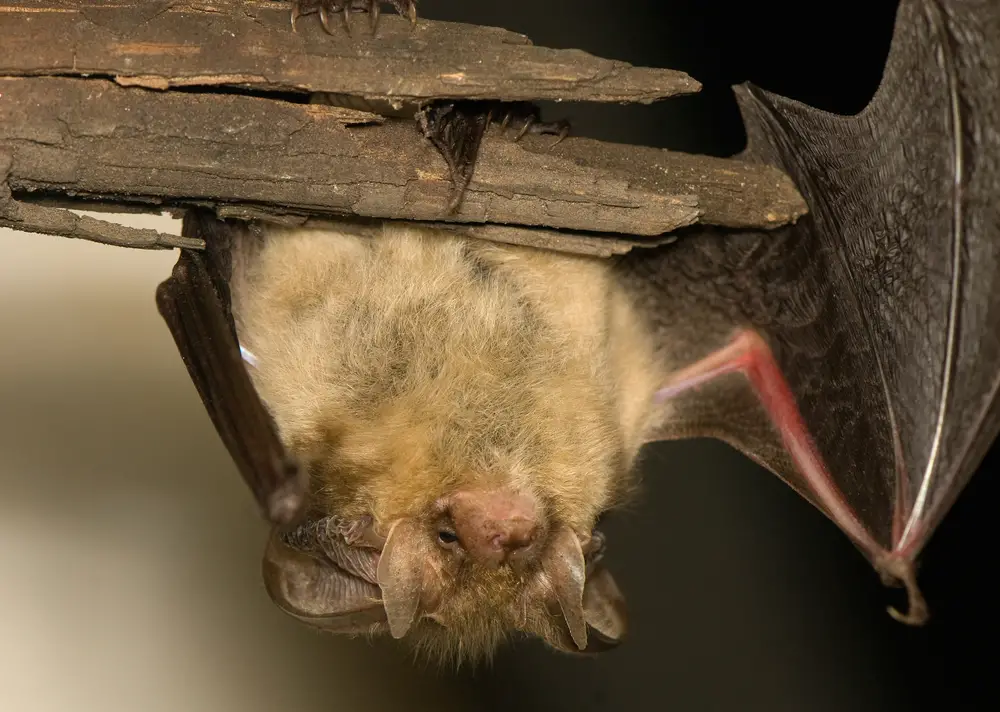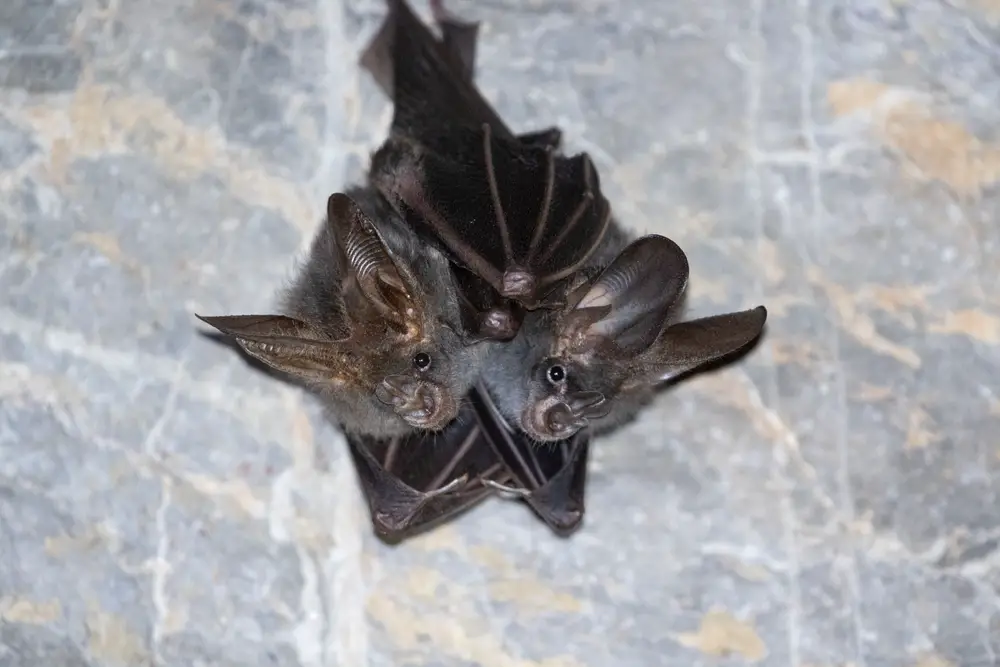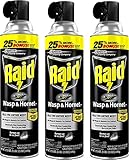When dealing with a bat infestation, it’s essential to find a safe and effective way to remove these flying mammals from your property. One product that has been rumored to eliminate bats is wasp spray.
Wasp spray, designed to eliminate stinging insects, contains powerful chemicals that affect the insect’s nervous system, quickly incapacitating them.
Quick Answer:
Using wasp spray or any pesticide on bats is not recommended and is illegal in many jurisdictions. Bats play a crucial role in ecosystems by controlling insect populations, including pests. If you’re dealing with a bat infestation, seek professional pest control or wildlife removal services to ensure humane and legal methods are used.
In many regions, bats are protected due to their essential role in the ecosystem as pollinators and pest controllers.
Some of these methods include bat exclusion devices, sealing entry points, and offering alternative roosting sites such as bat houses.
Effectiveness of Wasp Spray on Bats
Wasp spray, also known as wasp and hornet spray, is a popular choice for many individuals looking to eliminate pests like wasps, hornets, and yellow jackets. Its effectiveness in controlling these insects is well-documented, but what about its impact on bats?
Bats are an essential part of our ecosystem, serving as natural pest control by consuming thousands of insects every night. However, some people might consider using wasp spray on bats when they become a nuisance.
It’s crucial to understand whether or not wasp spray is effective against bats and the potential consequences of using it.
When it comes to killing bats, wasp spray is generally not considered an effective method. Wasp and hornet sprays contain active ingredients, such as pyrethrins and pyrethroids, which specifically target insects’ nervous systems. These chemicals have a minimal effect on mammals, including bats.
However, it’s important to note that direct exposure to these chemicals might cause some irritation and temporary discomfort for the bats.
While it’s tempting to use a readily available poison like wasp spray to kill bats, the ineffectiveness of this method would likely result in little more than added stress for the animals.
Comparing Wasp Spray with Other Methods
When it comes to bat removal, there are various methods available, including the use of wasp spray. However, it’s essential to compare these methods in terms of effectiveness, safety, and environmental impact.
Wasp spray, a common insecticide, is primarily intended for controlling wasps, hornets, and other stinging insects. Some people consider using it to get rid of bats, but this is not the recommended usage. Sprays containing chemicals like pyrethroids can be harmful to bats and other non-target species, so it is best to explore alternative methods.
One alternative to using insecticides like wasp spray is opting for natural pest control methods. These include:
- Installing bat houses to encourage the bats to roost elsewhere
- Sealing entry points to prevent bats from entering the structure
- Employing repellents like peppermint oil and mothballs, which might discourage bats from dwelling in the area
These natural methods often prove more effective and safer for both the bats and the environment.
Professional bat removal services are another route to consider. Pest control companies specialize in humane bat removal techniques, ensuring that the bats are relocated without harming them. These services also prevent the recurrence of bats by sealing up entry points.
When considering spider control, wasp spray may be a more relevant solution as both are insect species. However, even in this context, natural methods can still be effective. Introducing predatory insects, such as ladybugs, can help control the spider population without resorting to chemicals.
Potential Dangers of Using Wasp Spray on Bats
Wasp spray, while effective at exterminating wasps, can have unintended consequences when used in an attempt to kill or repel bats. This approach not only comes with potential risks to humans and the environment but also violates animal protection laws.
Among the most pressing concerns is the harm that these chemical insecticides can cause to people in close proximity. Inhaling the fumes from wasp spray can lead to respiratory issues, skin irritation, and even more severe health complications. Moreover, as these poisons are not designed specifically for bats, they might not even be effective in killing them.
Bats, like many other wildlife species, are protected under various conservation laws in many regions. It is essential to be aware of the legal consequences of using inappropriate and harmful methods to deal with bat infestations. Deliberately killing or even attempting to kill bats with the use of insecticides can result in fines and penalties.
Another danger of using wasp spray is its potential to contaminate the surrounding environment.
When the targeted bats die, they leave behind carcasses laced with toxic chemicals which pose a threat to other wildlife, pets, as well as the ecosystem. The poisoned bats can be consumed by predators like birds, thereby transferring the chemical up the food chain.
Additionally, chemicals in the wasp spray can infiltrate water sources, resulting in detrimental effects on aquatic life and further contamination of the ecosystem. Prevention of water pollution should always be a priority when considering pest control methods.
Dealing with Bat Infestations
A bat infestation in your attic can be a serious issue, as these creatures can cause structural damage, spread diseases, and create an unsettling environment. Addressing the problem promptly is crucial for the health and safety of your household.
First, it’s essential to identify the roosting areas where bats have made themselves at home. Bats often choose dark, secluded spaces like attics and corners near the roofline. Take note of any visible entry points they might be using to enter your home, such as gaps in ventilation systems or open windows.
Once you’ve pinpointed the infestation, the next step is to implement a bat exclusion strategy. This process involves installing netting or other materials over the entry points to prevent bats from re-entering your home.
Proper ventilation is also important, as it can deter bats from roosting in your attic and provide a healthier living environment for you and your family.
While some homeowners may feel comfortable tackling a bat infestation on their own, it’s always best to consult with professionals who are well-versed in dealing with such issues. They can offer expert advice, provide accurate estimates, and ensure a thorough and safe exclusion process.
Alternative Bat Control Methods
While using wasp spray to control bats is not recommended, there are several other methods available for bat control. These alternatives are safer and more effective in dealing with a bat infestation.
Glue traps: A popular option for catching bats is using specially designed glue traps. Place these traps in areas where you suspect bats are roosting. Once a bat gets caught, you can safely release it outside, away from your property.
Diatomaceous earth: A natural option for controlling bats is using diatomaceous earth. Sprinkle this substance in areas where bats might enter your home. Its abrasive nature can help deter bats, making them less likely to return.
Pyrethrin: Consider using a pyrethrin-based insecticide, which is effective against a variety of pests. These products might not directly kill bats, but they can help in controlling insects that bats feed on, thus discouraging them from staying in your home.
Deltamethrin: Another chemical option is deltamethrin, which can also help with controlling bats’ food sources. Use this product according to its label instructions for safe and effective application.
Please remember that physical methods, such as using a baseball bat or bleach, may not only be harmful to the bats but also illegal in some areas. Bats are vital for our ecosystem, so it’s essential to find humane ways to deal with them if they become a nuisance.
One such humane method is installing a bat house on your property. These structures encourage bats to roost outside your home while still providing the benefits of insect control for your garden.
If bats become a persistent issue, consider consulting a professional wildlife removal company. They can safely handle bat infestations and advise on effective exclusion methods, such as sealing entry points or installing one-way exit devices.
Effective Ways to Repel Bats
Bats can be a nuisance when they take up residence in your home or attic. To safely and effectively repel them, you can use various methods. Here are a few strategies to help keep these creatures at bay while being informative, friendly, and authoritative.
Lights: Bats are creatures of the night and are sensitive to light. Placing bright lights in the area where they roost can make it an undesirable location for them. Examples include LED bulbs and floodlights, which emit intense beams while being energy-efficient.
Ammonia: Soaking rags or cotton balls in ammonia and placing them near the bats’ resting area might discourage them from staying. Be cautious when handling ammonia and ensure the area is well-ventilated to prevent harm to humans and pets.
Strobe Lights: Similar to regular lights, strobe lights can be effective in repelling bats due to their sensitivity to rapid light changes. Installing strobe lights close to the bats’ roosting area may cause them to find a more suitable home.
Mothballs: Also known as naphthalene balls, mothballs can help repel bats when placed in their roosting area. The strong smell tends to deter them. However, use them with caution as mothballs can be toxic to humans and pets if ingested or inhaled in large quantities.
In contrast, some methods may not be as effective or safe when attempting to repel bats:
- Mouse traps and rat traps: These devices are unlikely to work on bats as they are designed for rodents and may even cause harm to the bats.
- Pepper spray: Using pepper spray to deter bats is not recommended as it can cause distress and potential injury to the animals and may even harm humans or pets in the vicinity.
- Suspend SC Insecticide: This product is designed to target insects and may not be effective against bats. Additionally, chemicals in insecticides could be harmful to bats and other wildlife.
- Wasp killer: Similarly, wasp killer sprays are meant for insects and might not impact bats. Using such chemicals could pose harm to other animals and disrupt ecosystems.
Impact on Other Pests and Animals

Using wasp spray to kill bats may have unintended consequences on other pests and animals.
The active ingredients in these sprays are usually pyrethroids, which are effective at controlling various insects, including ants, wasps, hornets, and mosquitoes. Insects that come into contact with the spray may also be affected or killed.
Gardens might experience the consequences of using wasp spray around them. The chemicals can potentially harm helpful insects such as bees and honeybees. As they are crucial pollinators for many plants, a decrease in their population can impact your garden’s growth and produce.
Birds can also be indirectly affected by the use of wasp sprays. When the spray kills insects, it may lead to a reduction in the food source for insectivorous birds. Furthermore, if a bird consumes a poisoned insect, it may be harmed or even killed from ingesting the chemicals.
Wasp nests and their colonies may be devastated by wasp sprays, as the chemicals target wasps and hornets. However, targeting a wasp nest with the intent to kill bats could lead to the decline of a beneficial wasp colony.
Wasps, in general, can assist in controlling other insect populations that could damage your garden or plants. Specifically, targeting a colony might also lead to the destruction of a hive, where the queen and worker bees reside.
While wasp sprays could possibly have some effect on bat populations, it is essential to consider the broader implications on the surrounding ecosystems, as well as other beneficial insects that live in those ecosystems.
It is recommended to consult a pest control professional and utilize specific bat removal methods, rather than resorting to wasp sprays when faced with a bat problem.
Dealing with Other Pests
When it comes to dealing with various pests like spiders, roaches, flies, fleas, centipedes, millipedes, pantry pests, silverfish, and bedbugs, there are different approaches and products that can be utilized.
One such product is Raid Wasp and Hornet Killer, which is known for its effectiveness in exterminating wasps and hornets. However, its effectiveness on other pests should also be considered.
- Kills hornets, mud daubers, wasps and yellow jackets on contact
- Wasp spray kills the entire nest
- Wasp killer and hornet killer sprays up to 22 feet
For example, cicada killers and sand wasps are insects closely related to wasps, and Raid Wasp and Hornet Killer can potentially knockdown these pests as well. The active ingredients in these products are designed to provide quick and effective action, though the efficiency might vary on other pests.
Similarly, Spectracide is a popular pest control solution with active ingredients that are known to provide a comprehensive and effective approach to tackling a wide array of insects. While designed primarily for wasps, it could prove helpful against other pests too.
When targeting pests like spiders, roaches, or silverfish, these products primarily work by filling the holes they reside in since these insects often hide in small crevices or spaces. Spraying the product into these areas can help dissolve and eliminate the bugs.
Protecting Pollinators and the Environment
Pollinators, such as bees, butterflies, and moths, play a crucial role in maintaining the biodiversity of our environment. In order to protect these beneficial creatures, it’s essential to consider alternative methods to pesticides or harmful chemicals when dealing with pest control issues like bats or paper wasps.
Chemical-free Solutions: Instead of using potentially harmful fumigants or sprays, try implementing physical barriers, such as netting or grilling, to keep pests out of your property. This way, you’ll prevent bats and other unwanted creatures from nesting or inhabiting spaces in your home without risking the health of pollinators.
Eco-friendly Sprays: If you absolutely must use a spray to deter pests, consider using a solution that’s safe for both the environment and pollinators. You can create a homemade concoction by filling a spray bottle with water and a tablespoon of dish soap. This gentle solution can be applied to areas where pests, like beetles and paper wasps, are likely to gather.
Promote Beneficial Insects: Encouraging certain insects, such as ladybugs and lacewings, to take up residence in your garden can help naturally control the populations of pests like beetles and paper wasps. These beneficial insects will not harm pollinators and can contribute to a healthier ecosystem overall.
Limited Use of Pesticides: While pesticides should generally be avoided, if their use becomes absolutely necessary, make sure to apply them sparingly in a targeted manner. Avoid using broad-spectrum pesticides that could unintentionally affect essential pollinators, such as bees and moths.
Always remember that responsible pest control methods protect both pollinators and the environment, ensuring a healthy ecosystem for future generations.



